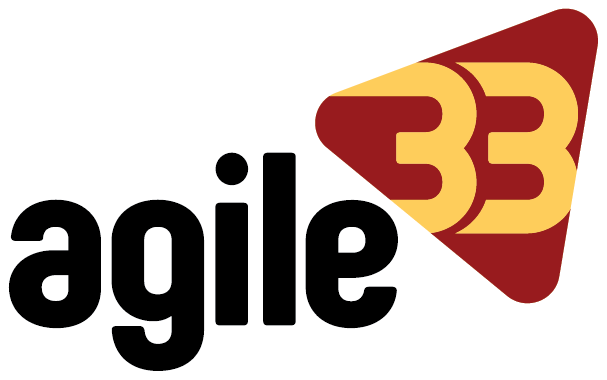
Effective project planning is the foundation of a successful project. It defines the approach, structure, and resources needed to achieve project goals while minimizing risks and inefficiencies. However, not all projects require the same planning method. Factors such as project complexity, duration, team dynamics, and organizational goals influence which planning approach will be most effective.
Understanding the different types of project planning and when to apply each can help teams improve efficiency, enhance collaboration, and deliver successful outcomes.
1. Strategic Planning
Strategic planning sets the long-term vision for a project, aligning it with business objectives and organizational priorities. It provides a high-level roadmap, ensuring that projects contribute to broader company goals.
Best Used For:
· Large-scale initiatives that span multiple teams or departments.
· Projects that require alignment with business strategy, such as digital transformation or market expansion.
· Establishing priorities and defining key performance indicators (KPIs).
Key Components:
· Defining project objectives and long-term impact.
· Identifying stakeholders and decision-makers.
· Establishing success criteria and major milestones.
Strategic planning ensures that every project supports the overall vision of the company and provides a framework for decision-making throughout the project lifecycle.
2. Operational Planning
Operational planning focuses on the execution phase of a project, breaking down the strategic plan into specific tasks, timelines, and responsibilities. It provides a clear path for teams to follow, ensuring efficiency in daily operations.
Best Used For:
· Projects with well-defined deliverables and deadlines.
· Organizations that require structured workflows and task assignments.
· Managing recurring projects, such as IT deployments, marketing campaigns, or product launches.
Key Components:
· Task breakdown and workflow design.
· Resource allocation and role assignments.
· Risk assessment and contingency planning.
Operational planning translates strategic objectives into actionable steps, making it essential for managing project execution effectively.
3. Tactical Planning
Tactical planning bridges the gap between strategic and operational planning, focusing on the short-term actions required to achieve project milestones. It ensures that teams remain agile and responsive to changing conditions.
Best Used For:
· Mid-sized projects that require adaptability.
· Situations where teams need to make quick adjustments based on project progress.
· Initiatives that involve multiple departments with interdependent tasks.
Key Components:
· Setting short-term goals aligned with the overall strategy.
· Adjusting resource allocation based on project needs.
· Monitoring progress and optimizing workflows as necessary.
Tactical planning is ideal for projects that require flexibility while maintaining alignment with long-term goals.
4. Agile Planning
Agile planning is an iterative and adaptive approach designed for fast-moving projects, particularly in software development, product management, and innovation-driven environments. It emphasizes continuous feedback, flexibility, and incremental progress.
Best Used For:
· Projects with evolving requirements or uncertain end goals.
· Software development, where iterative releases improve functionality over time.
· Teams that require collaboration, adaptability, and customer feedback.
Key Components:
· Breaking projects into smaller iterations (sprints).
· Continuous testing and stakeholder feedback loops.
· Prioritization of tasks based on changing business needs.
Agile planning works best when flexibility is required, allowing teams to adjust priorities and workflows dynamically.
5. Waterfall Planning
Waterfall planning follows a linear, step-by-step approach, where each phase of a project is completed before moving to the next. It is best suited for projects with well-defined requirements and little room for change.
Best Used For:
· Projects with fixed budgets, timelines, and deliverables.
· Construction, manufacturing, or regulated industries with strict compliance needs.
· Teams that require detailed documentation and structured workflows.
Key Components:
· Sequential project phases (requirements, design, implementation, testing, deployment).
· Detailed documentation and planning before execution.
· Clear scope, budget, and deadline commitments.
Waterfall planning ensures predictability and is best for projects where changes after execution would be costly or impractical.
6. Contingency Planning
Contingency planning prepares teams for potential risks and unexpected disruptions by developing alternative courses of action. It ensures that organizations remain resilient in the face of uncertainty.
Best Used For:
· High-risk projects with potential obstacles or external dependencies.
· Crisis management, disaster recovery, or cybersecurity initiatives.
· Industries with strict compliance or regulatory requirements.
Key Components:
· Identifying possible risks and their impact.
· Developing alternative strategies for risk mitigation.
· Assigning responsibilities for crisis response.
Contingency planning helps organizations stay prepared and maintain operations even when unforeseen challenges arise.
How to Choose the Right Project Planning Approach
Selecting the right planning method depends on several factors:
Project Complexity:
· For complex, evolving projects → Agile Planning
· For structured, predictable projects → Waterfall Planning
Time Sensitivity:
· For urgent, short-term goals → Tactical Planning
· For long-term vision and business alignment → Strategic Planning
Flexibility Needs:
· For adaptability and continuous improvement → Agile Planning
· For detailed, structured execution → Operational Planning
Risk Management:
· For high-risk environments → Contingency Planning
· For well-documented, low-risk execution → Waterfall Planning
A well-chosen planning approach improves efficiency, reduces risk, and ensures that projects are completed successfully while aligning with business goals.
Project planning is not one-size-fits-all. Different types of planning serve different purposes, and selecting the right one ensures that projects stay on track, teams remain aligned, and risks are managed effectively.
Understanding the strengths of each planning approach allows organizations to adapt their strategies based on the nature of the project, its complexity, and the need for flexibility or structure.
